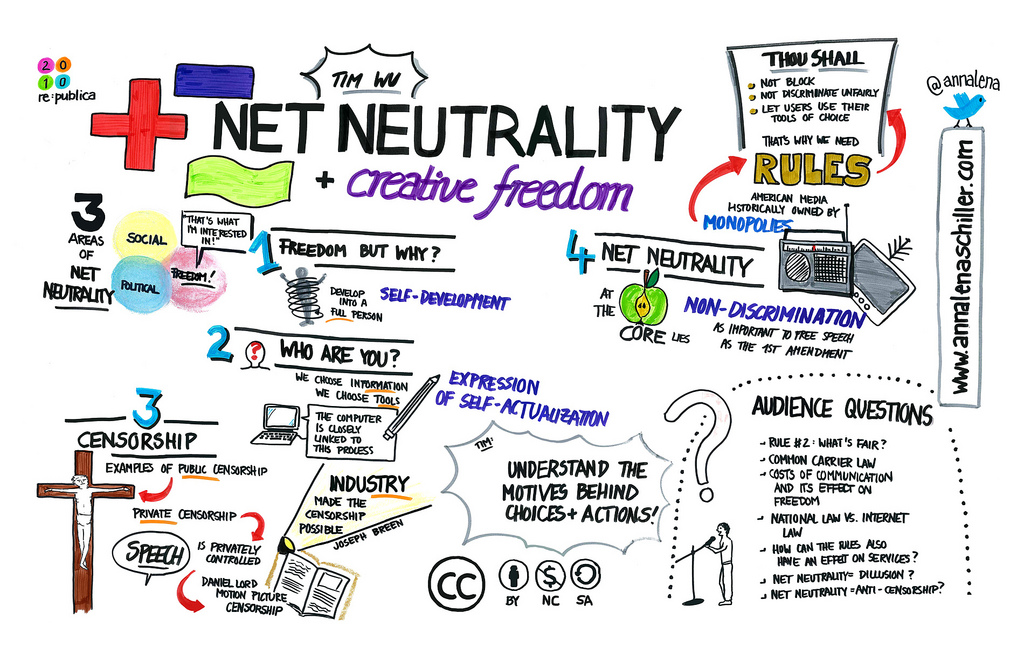Verizon Wireless has announced that it plans to open its network next year, offering consumers the ability to use any product and any application that meets certain technical standards. A huge development that highlights how fast this market is changing and how far behind Canada will fall unless there are […]

Net Neutrality And Creative Freedom (Tim Wu at re:publica 2010) by Anna Lena Schiller (CC BY-NC-ND 2.0) https://flic.kr/p/7VfazT
Net Neutrality
Comcast Sued Over Traffic Shaping
The lawsuit is here, details on an FCC petition from Vuze here, and it is worth noting that the claims would seemingly be at home up here.
Comcast Sued Over Traffic Shaping
The lawsuit is here, details on an FCC petition from Vuze here, and it is worth noting that the claims would seemingly be at home up here.
How the Internet On Cable Became the Internet as Cable
When Rogers Communications began promoting its Rogers@Home high-speed Internet service nearly a decade ago, the company branded it "the Internet on Cable." My weekly column (Toronto Star version, homepage version, Ottawa Citizen version, Tyee version) notes that years later, their service, as well as those of their competitors, is gradually morphing into "the Internet as Cable" as broadcasters, Internet service providers, and cultural groups steadily move toward the delivery of content online that bears a striking resemblance to the conventional cable model.
While cable television has its virtues – some consumer choice, the ability to time shift programs by recording them with a VCR or PVR, and video on-demand offerings – it is largely premised on limited consumer control. Cable distributors determine channel choices, geographic distribution, and commercial substitution (with input from the broadcast regulator), offer only limited interactivity, and quietly even possess the ability to stop consumers from recording some programs.
Until recently, the Internet was precisely the opposite, offering unlimited user choice, continuous interactivity, and technological capabilities to copy and remix content. That is gradually changing as broadcasters seek to re-assert greater geographic control over their content, ISPs experiment with cable-like models for prioritized content delivery, and some creator groups lobby the Canadian Radio-Television and Telecommunications Commission to adapt Canadian content regulations to the Internet.
How the Internet On Cable Became the Internet as Cable
When Rogers Communications began promoting its Rogers@Home high-speed Internet service nearly a decade ago, the company branded it "the Internet on Cable." My weekly column (Toronto Star version, homepage version, Ottawa Citizen version, Tyee version) notes that years later, their service, as well as those of their competitors, is gradually morphing into "the Internet as Cable" as broadcasters, Internet service providers, and cultural groups steadily move toward the delivery of content online that bears a striking resemblance to the conventional cable model.
While cable television has its virtues – some consumer choice, the ability to time shift programs by recording them with a VCR or PVR, and video on-demand offerings – it is largely premised on limited consumer control. Cable distributors determine channel choices, geographic distribution, and commercial substitution (with input from the broadcast regulator), offer only limited interactivity, and quietly even possess the ability to stop consumers from recording some programs.
Until recently, the Internet was precisely the opposite, offering unlimited user choice, continuous interactivity, and technological capabilities to copy and remix content. That is gradually changing as broadcasters seek to re-assert greater geographic control over their content, ISPs experiment with cable-like models for prioritized content delivery, and some creator groups lobby the Canadian Radio-Television and Telecommunications Commission to adapt Canadian content regulations to the Internet.






